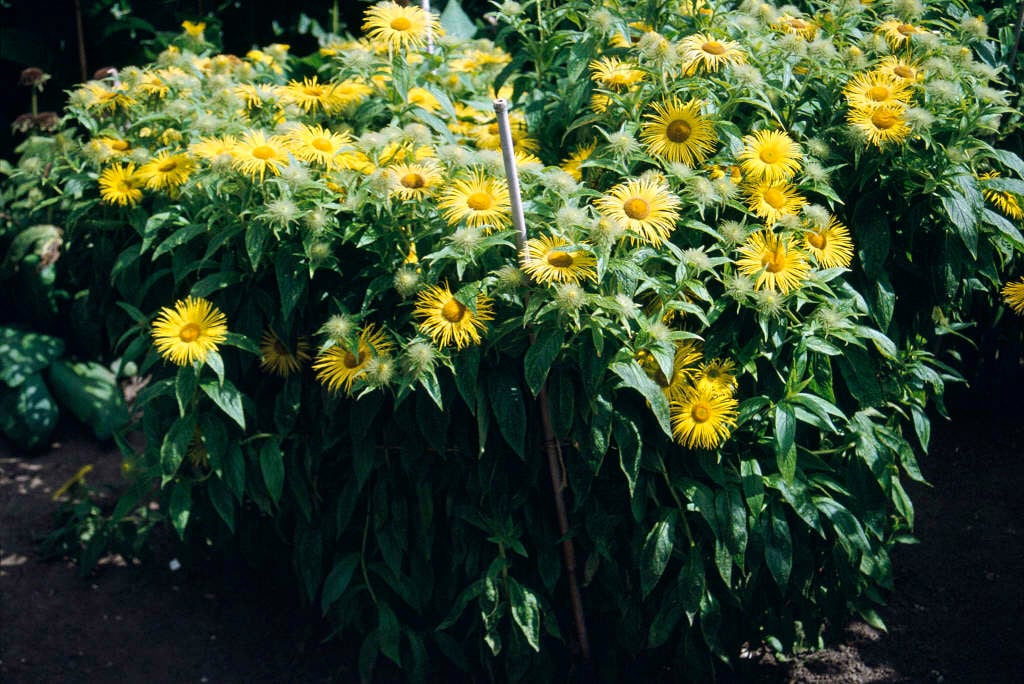Not the plant you're looking for? Search over 300,000 plants
Herbaceous Perennial
Size
Ultimate height
0.5–1 metresTime to ultimate height
2–5 yearsUltimate spread
0.5–1 metresGrowing conditions
Chalk
Clay
Loam
Sand
Moisture
Moist but well–drainedpH
Acid, Alkaline, NeutralColour & scent
| Stem | Flower | Foliage | Fruit | |
| Spring | Green | |||
|---|---|---|---|---|
| Summer | Yellow | Green | ||
| Autumn | Yellow | Green | ||
| Winter |
Position
- Partial shade
Aspect
East–facing or North–facing or West–facing
Exposure
Exposed or Sheltered Hardiness
H6Botanical details
- Family
- Asteraceae
- Native to GB / Ireland
- No
- Foliage
- Deciduous
- Habit
- Columnar upright
- Genus
Inula may be annuals, herbaceous perennials or sub-shrubs, moslty with large basal leaves and daisy-like yellow flower-heads, often with narrow ray-florets
- Name status
Correct
- Plant range
- Himalaya
How to grow
Cultivation
Grow in a deep, fertile moist but well-drained soil in partial shade. Can be invasive so site with care
Propagation
Propagate by seed in pots in a cold frame in spring or autumn. Propagate by division in spring or autumn
Suggested planting locations and garden types
- Cottage and informal garden
- Wildlife gardens
- Cut flowers
- Flower borders and beds
Pruning
Cut back after flowering
Pests
Generally pest-free
Diseases
May be susceptible to powdery mildews
Get involved
The Royal Horticultural Society is the UK’s leading gardening charity. We aim to enrich everyone’s life through plants, and make the UK a greener and more beautiful place.
